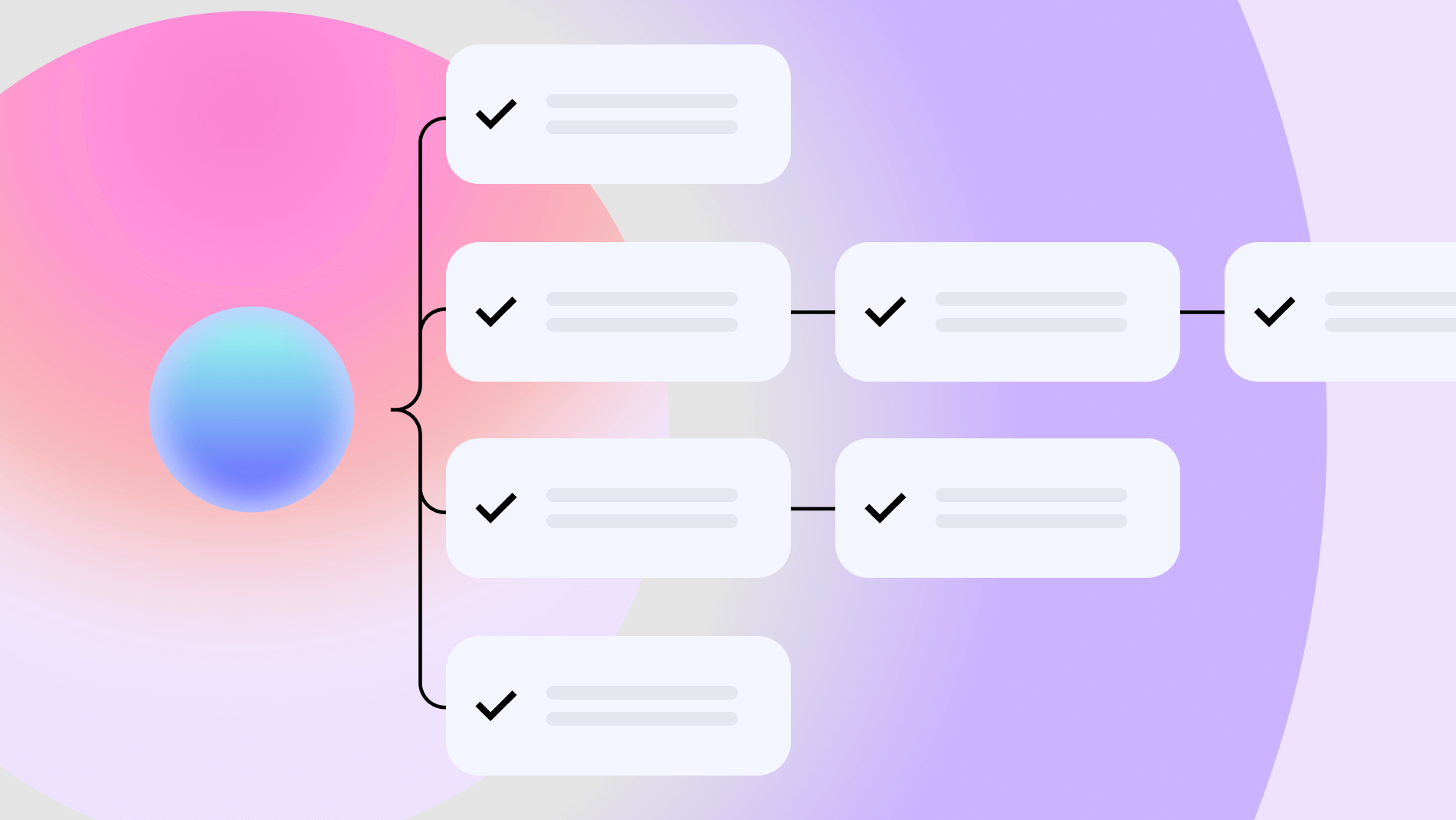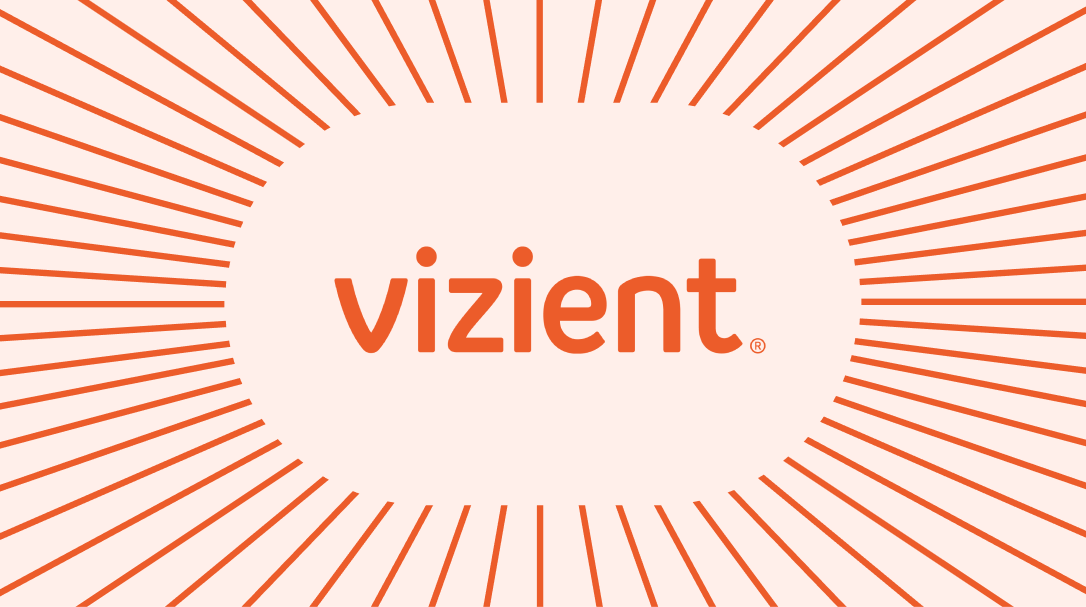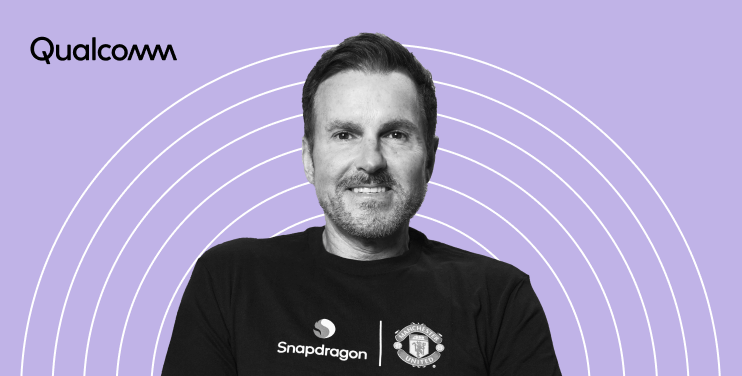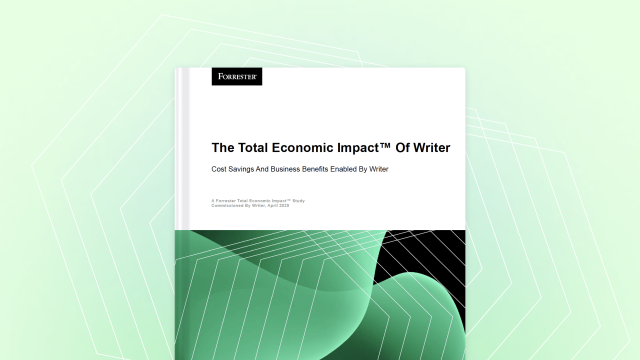AI agents at work
– 23 min read
Agentic AI for marketing teams: Use cases from content generation to campaign orchestration

AI has changed everything about marketing. What used to take weeks now happens in hours. Customers expect hyper-personalized experiences across every touchpoint. Competitors can spin up campaigns overnight. And while AI tools promise to solve these challenges, most marketing teams are drowning in a sea of disconnected point solutions, endless prompting sessions, and the constant fear of losing their brand integrity in the rush to keep up.As a result, marketing leaders get caught in an impossible bind — you need both speed AND custom fit. Speed to match the AI-accelerated pace of business. Custom fit to match each opportunity — the right message for the right segment, tailored to your specific ICP, optimized for the exact moment and context where engagement happens.
It’s Tuesday at 2pm. Your competitor’s marketing team is still manually pulling quotes from last month’s webinar transcript for social posts. Meanwhile, your team just launched their third campaign of the week — complete with personalized email sequences, industry-specific landing pages, and sales enablement materials. The difference? You’ve moved beyond generative AI prompts to something far more powerful: agentic AI.
- The AI acceleration challenge: Marketing teams need both speed to react to opportunities and custom fit to match each moment — but most AI tools force you to choose between the two
- Agentic AI delivers both: Acts as project manager and team, orchestrating entire workflows autonomously while maintaining brand consistency
- Human role evolves: Marketers shift from content creators to strategic architects who set direction and orchestrate AI systems
- Six proven use cases: Content atomization, hyper-personalization, SEO/GEO, brand governance, competitive intelligence, sales enablement
- From prompting to orchestrating: Leading companies build AI agents that embody brand intelligence and execute strategic vision at unprecedented speed
What is agentic AI, and why does it matter for marketing?
If you’ve asked ChatGPT to “write a buyer persona for enterprise software decision-makers,” you’ve used generative AI. You give it a specific prompt, and it generates a response. It’s powerful, but it’s a one-to-one interaction that stops there.
Agentic AI is different. An AI agent is a system that can understand a high-level goal, independently break that goal down into a series of tasks, and then execute those tasks using various tools until the objective is complete.
Think of the difference between a freelancer and a manager-contributor:
- Generative AI is the freelance writer: You give it a specific assignment (a prompt), and it delivers that single piece of work.
- Agentic AI is the project manager and the team: You give it a strategic goal (e.g., “launch a campaign for our new feature”), and it both orchestrates the entire process AND executes the work — researching competitors, drafting multiple content assets, cross-referencing brand guidelines, and preparing everything for launch.
This ability to perform autonomous workflows is a breakthrough for enterprise marketing teams. It addresses the core challenge of modern marketing: not just creating content, but managing the immense complexity and operational overhead involved in bringing a full campaign to life.
The strategic human role in agentic workflows
When agentic AI handles both project management and execution, what’s left for human marketers? Everything that matters most.
Humans set the strategic direction. You define the goals, identify the opportunities, and establish the success metrics. Agentic AI executes the plan, but you decide what success looks like and why it matters to the business.
Humans provide context and judgment. While AI agents can research competitors and analyze data, you bring market intuition, customer empathy, and business context that only comes from experience. You know when a campaign needs to pivot based on nuanced market signals not captured in data.
Humans maintain relationships and brand stewardship. Agentic AI ensures brand consistency, but you define what your brand stands for and how it should evolve. You own the relationships with customers, partners, and internal stakeholders that ultimately determine campaign success.
Humans orchestrate the orchestrators. You design the workflows, set the guardrails, and optimize the agents performance. Think of it as conducting an AI-powered marketing orchestra — you’re not playing every instrument, but you’re creating the symphony.
In this model, human marketers evolve from content creators and campaign managers to strategic architects and AI conductors. You spend less time on execution and more time on the high-level thinking that drives business growth.
Understanding levels of agentic autonomy
Not all AI agents are created equal. To understand what’s possible today versus what’s coming tomorrow, it’s helpful to understand the four levels of agentic autonomy:
Assistive agent: Uses language models to automate simple tasks based on instructions and prompts. Input goes to the LLM, which generates output. Perfect for tasks like recapping information or generating FAQs.
Knowledge agent: Delivers context-rich outputs by integrating your enterprise knowledge through retrieval-augmented generation (RAG). It retrieves relevant information from internal documents and databases to provide more informed, contextually accurate responses.
Action agent: Automates tasks by connecting to external tools and APIs. The LLM uses tool calling, which arms it with capabilities beyond its built-in knowledge — like interacting with third-party services to send emails, update Salesforce records, or publish content to WordPress.
Multi-agent system: A network of agents that collaborate to accomplish complex goals. Multiple agents communicate, pass tasks, and execute in a coordinated manner — ideal for complex workflows like full procurement processes or end-to-end IT incident resolution.
For marketing teams just starting their agentic AI journey, you can take a “crawl, walk, run” approach, progressively increasing sophistication as you learn what works best for your use cases.
Agentic AI use cases across the marketing funnel
While the four levels of autonomy provide a framework for understanding what’s possible, the real question for marketing leaders is — “Where should we start?” The answer depends on your team’s priorities, current pain points, and strategic objectives.
The matrix below maps specific agentic AI use cases across marketing functions and funnel stages. This isn’t just a list of what’s possible — it’s a strategic roadmap for implementation. You can identify high-impact, low-complexity starting points (like automated competitive research or content repurposing) and progressively work toward more sophisticated multi-agent workflows (like end-to-end campaign orchestration or ABM list building).
How to use this matrix:
- Start with your biggest pain points: Look for use cases that address your team’s most time-consuming manual tasks
- Consider your tech stack: Some use cases require specific integrations or data sources
- Think strategically about funnel coverage: Ensure you’re addressing opportunities across the entire customer journey
- Plan for progression: Begin with assistive and knowledge agents, then advance to action agents and multi-agent systems
Marketing use case matrix by function and funnel stage
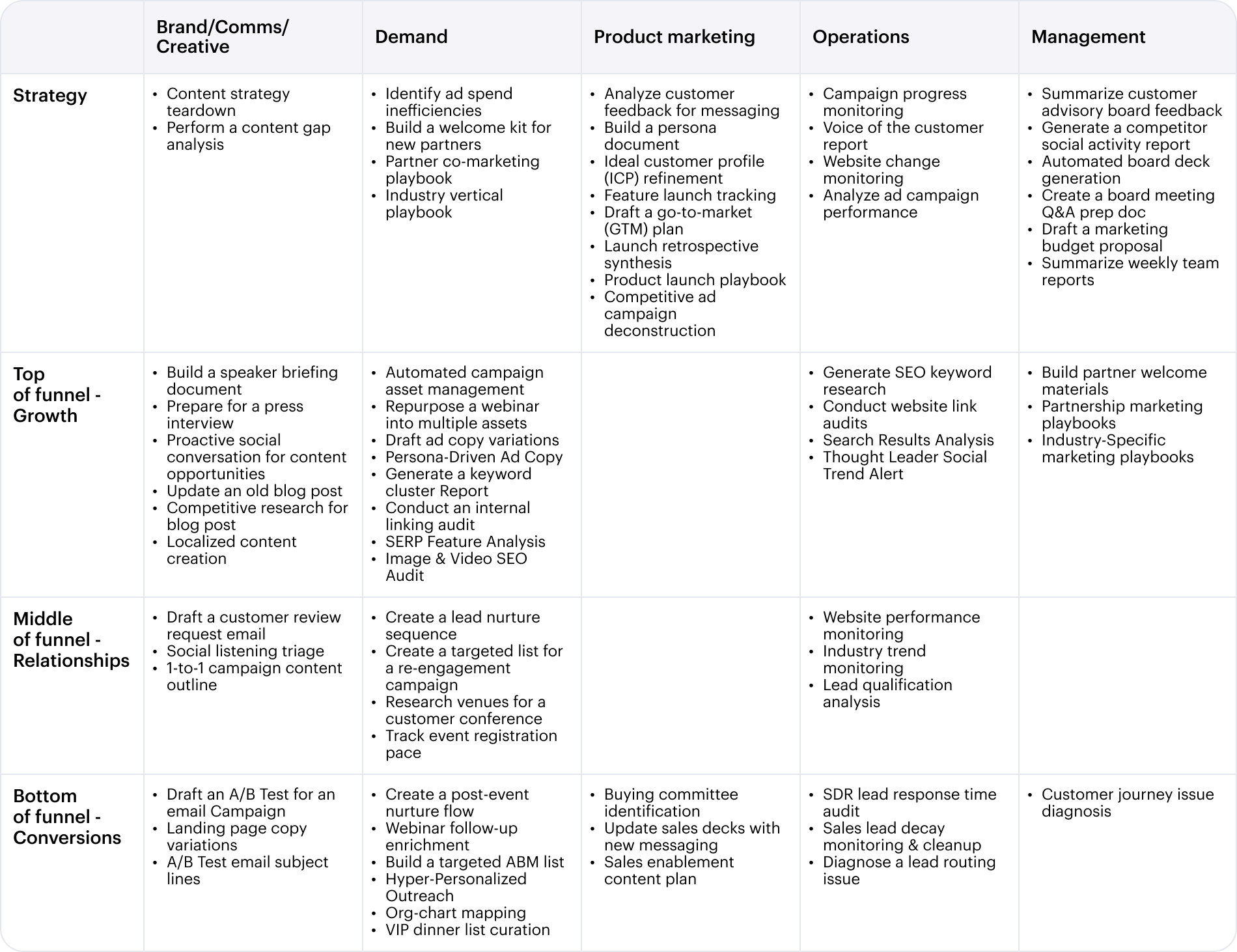
Six real-world use cases for agentic AI in enterprise marketing
The difference between generative AI and agentic AI becomes clear when you see it in action. Here are five tangible use cases where AI agents are transforming enterprise marketing operations today.
1. Full-funnel content atomization
The challenge: Your team just published a comprehensive research report. The insights are invaluable, but the asset is locked in a single format. Manually repurposing it into a full-funnel campaign takes weeks of a content strategist’s time.
Real-world example: Vizient’s marketing team needed to transform their 60-page “Pharmacy Market Outlook” report — considered the gold standard in healthcare — into multi-channel campaign assets. Before WRITER, this would have required nearly a dozen collaborators, including eight subject-matter experts, working for weeks to manually adapt the content for different audiences and channels.
The agentic workflow: You give an AI agent a single command — “Create a promotional campaign from this research report.” The agent gets to work:
- Analyzes the entire report to identify core themes, key statistics, and compelling quotes
- Drafts a series of assets tailored to different channels and funnel stages:
- An SEO-optimized summary blog post
- A five-part email nurture sequence for lead generation
- A LinkedIn post and Twitter thread for social promotion
- A script for a two-minute promotional video
- Talking points for the sales team to use in outreach
- Cross-references all drafted content against your brand style guide and messaging pillars to ensure 100% compliance
- Delivers a complete package of assets ready for human review
The outcome: With WRITER’s agentic AI, Vizient can now deliver personalized content across multiple buyer personas and customer journey stages — something they couldn’t prioritize or staff for manually. Nearly a year in, Vizient is getting four times the ROI results the team expected, saving more than 100 collaborators nearly two and a half hours a week each, with projected year-one savings of $700,000. A multi-week content atomization project becomes a same-day delivery across multiple audiences.
2. Hyper-personalization at scale
The challenge: You need to create industry-specific landing pages and email campaigns for a new product launch, targeting multiple industries. Each vertical requires unique messaging, pain points, and customer proof points.
Real-world example: Qualcomm’s marketing team needed to create messaging guides tailored to specific audiences across their diverse product portfolio. Before WRITER, this task occurred “up to 15 times a quarter and takes several hours to complete” for each messaging guide. Marketing Manager David Woodruff had to either create assets himself or manually edit others’ work to match the Snapdragon voice.
The agentic workflow: An AI agent creates personalized campaign kits:
- Ingests your core product messaging, target industry list, and links to relevant customer stories
- Takes in a product brief and generates a first draft of the messaging guide in seconds, tailored to specific audiences, including components like key messages, value pillars, and proof points, all produced in a consistent style and format
- Conducts web research to identify the top three pain points for marketing leaders in each target industry
- Generates unique landing page copy, three email variations, and social media ad copy for each industry
- Integrates the most relevant customer quotes and statistics into the assets for each vertical
The outcome: At Qualcomm, “anyone can execute the Snapdragon voice themselves, reducing manual work … and speeding up time to market.” The team can now “spend more time with engineering, product, and sales teams validating and refining that messaging. WRITER has really helped us speed up the time to market and deliver better, more strategic solutions.” What used to take several hours per messaging guide now happens in seconds.
3. Proactive SEO and GEO content strategy and creation
The challenge: Your team needs to gain visibility across the evolving search landscape — not just traditional Google rankings, but emerging generative engine optimization (GEO) and answer engine optimization (AEO). With Gartner predicting traditional search volume will drop 25% by 2026 due to AI chatbots and virtual agents, you need content optimized for ChatGPT, Perplexity, Google AI Overviews, and other AI-powered search experiences.
Real-world example: WRITER’s marketing team faced this exact challenge when creating content around competitive topics like “corporate AI policy.” They needed to rank competitively while also ensuring their content would be cited by generative AI engines and featured in answer boxes across multiple platforms.
The agentic workflow: A GEO-focused AI agent implements a triple-optimization approach:
- Conducts question-based keyword research using tools like AnswerThePublic to identify what audiences are actually asking
- Analyzes competitors across traditional search AND generative engines like ChatGPT and Perplexity
- Generates a comprehensive content brief optimized for SEO, AEO, and GEO simultaneously
- Structures content with logical heading hierarchies, question-based H2s, and direct answers in opening paragraphs
- Includes mini table of contents, FAQ sections with schema markup, and proper semantic HTML
- Implements E-E-A-T framework (Expertise, Experience, Authoritativeness, Trustworthiness) signals throughout
- Creates content that performs across traditional search rankings, featured snippets, and AI-generated responses
The outcome: WRITER’s corporate AI policy blog post delivered remarkable triple-threat results — it ranks on the first page for over 25 different question-based keywords, frequently appears in Google’s AI Overviews, gets cited by multiple generative AI tools when users ask about AI policy development, and became one of their highest-converting blog articles.
Even more strategically, WRITER’s interactive agent pages now rank first on high-intent Perplexity queries for specific agentic AI use cases — like their product claims check tool and product detail page translation agents appearing at the top when users search for those exact solutions. This demonstrates the power of creating functional, interactive content that serves user needs while showcasing product capabilities.
This integrated approach doesn’t require three separate content strategies — the same principles that work for SEO also optimize for answer engines and generative AI citation. It gives you maximum visibility across all search modalities while directly demonstrating your solution’s value.
Try it yourself: Create GEO-optimized content with our free agent
4. Automated brand governance and compliance audits
The challenge: Your company operates in a regulated industry, and ensuring brand and legal compliance is non-negotiable. Manually reviewing thousands of web pages, sales decks, and marketing assets for outdated messaging or non-compliant claims is a monumental task.
Real-world example: Prudential Financial’s marketing team, led by Ashley Cheretes (Director of AI) and Lilly Raymond (Marketing Strategy), faced the challenge of maintaining brand compliance across a 148-year-old financial services company with strict regulatory requirements. They needed to transform Prudential’s content creation while increasing speed to market by 70% and boosting their creative team’s capacity by 40%.
The agentic workflow: A governance AI agent deploys to audit your content:
- Crawls a specified list of URLs or a document library
- Compares content against centralized rules: approved product terminology, legal disclaimers, voice guidelines, and claims from your latest messaging framework
- Flags any deviations, such as outdated product names, missing disclaimers, or off-brand tone
- Generates a prioritized report for your marketing ops or compliance team to review, often with suggested fixes
The outcome: At Prudential, the team built custom AI agents like their voice-of-customer analysis tool that turned customer feedback into actionable insights while enhancing both personalization and compliance. Their human-centered approach won over skeptics, driving transformation “one workflow at a time.” Brand and legal risks decrease while maintaining the speed and creativity marketing teams need to compete.
5. Real-time market and competitive intelligence
The challenge: The market is moving fast. You need to stay on top of competitor moves, industry trends, and customer conversations, but your team doesn’t have the bandwidth for daily manual research while managing campaigns.
Real-world example: Salesforce’s 3,000+ employees using WRITER needed to stay current with messaging across rapidly evolving product launches while supporting use cases spanning “customer research, product launches, press releases, video scripts, executive communications, training modules, and help center articles.” VP Jessica Bergmann noted that “WRITER has reviewed billions of words produced by our teams, showing the magnitude of usage.”
The agentic workflow: A market intelligence agent runs on an automated schedule:
- Monitors competitor websites, industry news outlets, and social media channels
- Identifies key events, such as competitor product launches, new funding announcements, or shifts in messaging
- Synthesizes findings into a weekly intelligence briefing, complete with summaries and links to sources
- Delivers the report to your leadership team’s inbox every Monday morning
- Automatically creates competitive response briefs when significant competitor moves are detected
The outcome: At Salesforce, users report “a 20% productivity boost — equivalent to saving one workday per week — and 78% say WRITER positively impacts their work.” As Bergmann explains, “There are many use cases where we would’ve previously hired a person or an agency, but now we can scale internally with WRITER.” Your teams stay ahead of competitive moves with automated, proactive insights while maintaining focus on strategic initiatives.
6. Automated sales enablement kit creation
The challenge: Your marketing team publishes valuable content — blog posts, case studies, product announcements — but translating that content into actionable sales materials takes hours of coordination between marketing and sales teams. SDRs need talking points, email templates, and social outreach materials, but creating these for every piece of content manually is impossible at scale.
Real-world example: WRITER’s marketing team faced this exact challenge. Every time they published content like their “EU AI Code of Practice” blog post, they needed to quickly create sales enablement materials so their SDRs could capitalize on the content for pipeline generation. Manual creation meant either rushed, generic materials or significant delays that reduced the content’s sales impact.
The agentic workflow: WRITER’s “PG Kit-o-matic” agent takes any piece of marketing content and automatically creates a complete sales enablement kit:
- Analyzes the source content to identify key themes, value propositions, and audience pain points
- Generates three distinct key messages tailored to different selling scenarios and buyer concerns
- Creates multiple email templates with varied subject lines and messaging approaches for different outreach cadences
- Develops social media posts that SDRs can use for social selling and thought leadership
- Structures all materials around specific audience needs and use cases
- Maintains voice and compliance requirements across all generated assets
The outcome: What used to require hours of coordination between marketing and sales teams now happens instantly. For their EU AI Code of Practice content, the agent generated three targeted key messages (Trust by Design, Global Compliance Leadership, Enterprise AI Adoption), complete email templates for CIO outreach, and supporting social content — all optimized for technical decision-makers concerned about AI compliance. SDRs can now use every piece of marketing content immediately, dramatically increasing the sales impact of marketing investments while ensuring consistent, on-brand messaging across all touchpoints.
How WRITER enables agentic AI for the enterprise
Understanding the power of agentic AI is one thing; implementing it in a secure, scalable, and on-brand way is another. This is where WRITER’s full-stack platform, AI HQ, stands apart from basic generative tools.
WRITER addresses the complex needs of enterprise marketing. We provide the tools to build, deploy, and manage AI agents that learn from your data, adhere to your brand rules, and connect to your business-critical systems.
Enterprise-proven results: Leading companies trust WRITER for mission-critical marketing operations:
- Vizient projects year-one savings of $700,000 while getting “4x the ROI results the team expected”
- Qualcomm saves “about 2,400 hours per month” with 85% of users using WRITER weekly
- Salesforce deployed WRITER to over 3,000 employees, with users reporting “a 20% productivity boost — equivalent to saving one workday per week”
WRITER Action Agent: Beyond consumer AI tools: While consumer AI tools like ChatGPT excel at responding to prompts, WRITER’s Action Agent is designed for enterprise complexity. It doesn’t just generate content — it analyzes complex datasets, draws insights from research, creates ready-to-use files, and orchestrates tasks across systems.
What makes Action Agent different from consumer tools:
- Real-world autonomy: Leading GAIA and CUB benchmarks for reasoning and computer use tasks
- Multi-modal capabilities: Analyzes data files, navigates browsers, runs code, and creates different file types
- Enterprise integration: Coming soon — 80+ connectors to ground Action Agent in your actual work systems
- Built for business workflows: Designed by AI researchers in collaboration with industry experts who understand real enterprise processes
Consumer AI tools require you to prompt your way through each step. Action Agent requires you to simply direct — “Analyze our Q3 performance against competitors and create a strategy presentation” — and it handles the research, analysis, and file creation autonomously.
Product overview: Meet WRITER Action Agent
Prebuilt marketing agents: You can use our Agent Library for prebuilt agents that tackle common marketing tasks right out of the box — from content repurposing and competitive analysis to brand compliance audits.
Explore free agents: WRITER marketing agent library
Custom agent creation: For more complex, bespoke workflows, WRITER AI Studio allows you to create your own custom agents. Chain together different skills — from web research and data analysis to content generation and internal knowledge retrieval — to build autonomous workflows perfectly tailored to your team’s unique processes.
Platform overview: Build custom agents with WRITER AI Studio
Enterprise-grade security and compliance: As Vizient’s VP Thomas Rogers explains: “Privacy and compliance are critical to our operations. WRITER not only met our standards, but has a track record of success in building enterprise AI technologies.” WRITER provides enterprise-grade security, data privacy, and our industry-leading knowledge system that ensures everything the agent produces is accurate and based on your own information.
Trust and security: WRITER’s commitment to enterprise security
From prompting to orchestrating: The future is agentic
The conversation around AI in marketing is shifting from “How can I write this faster?” to “How can I orchestrate this entire campaign more intelligently?”
Here’s the reality — AI has created a new competitive landscape where speed without custom fit leads to generic, off-brand content that gets lost in the noise. And custom fit without speed means watching competitors capture market opportunities while you’re still perfecting your messaging.
Agentic AI solves the “speed and custom fit” dilemma. It delivers the velocity your business demands while ensuring every output reflects your voice, meets your compliance requirements, and resonates with your specific audiences. You get autonomous workflows that move at machine speed with human-level strategic thinking baked in.
This isn’t about doing more with less. It’s about doing what was previously impossible — scaling strategic thinking, not just content production. Your agents don’t just write faster — they orchestrate campaigns, maintain brand consistency, ensure compliance, and adapt to your unique business requirements automatically.
The marketing teams that win in this AI-accelerated world will be those that master orchestration, not just generation. They’ll be the ones who’ve moved beyond prompt engineering to system engineering — building AI agents that embody their brand intelligence and execute their strategic vision at unprecedented speed.
Ready to see how agentic AI can deliver both speed and custom fit for your marketing operations?
Get started: Explore WRITER’s marketing AI solutions or browse our library of prebuilt marketing agents
Talk to an expert: Request a demo to see how WRITER can transform your marketing operations
Frequently asked questions
What is the main difference between generative AI and agentic AI for marketing? Generative AI is a tool that responds to a single prompt to create a piece of content. Agentic AI is a system that takes a high-level goal, breaks it down into multiple steps, and uses various tools to execute the entire workflow autonomously. For marketing, this is the difference between drafting an email (generative) and orchestrating an entire email campaign from research to asset creation (agentic).
How can AI agents help with campaign orchestration? AI agents are ideal for campaign orchestration because they can connect and manage a sequence of tasks. An agent can start by researching a topic, then generate a content brief, draft assets for multiple channels (email, social, web), ensure all assets are on-brand, and even pull performance data to inform the next step — all within a single automated workflow.
How does WRITER’s agentic AI compare to consumer AI tools for marketing automation? Consumer AI tools like ChatGPT require you to prompt your way through each step of a marketing workflow. WRITER’s agentic AI lets you simply direct — “Launch a campaign for our new product feature” and handles research, content creation, brand compliance, and asset coordination autonomously. WRITER is also built with enterprise-grade security, brand governance, and integration capabilities that consumer tools lack.
What makes WRITER more suitable for enterprise marketing than general AI assistants? WRITER is purpose-built for enterprise marketing needs with features like automated brand compliance, legal review workflows, enterprise security standards, and deep integration with business systems. While general AI assistants excel at individual tasks, WRITER orchestrates complete marketing operations while maintaining brand consistency and regulatory compliance across all outputs.
Can WRITER’s AI agents handle complex campaign orchestration? Yes, WRITER’s Action Agents and Multi-Agent Systems handle complex campaign orchestration. They can coordinate multiple marketing functions simultaneously — from competitive research and content creation to brand compliance and cross-channel distribution — while maintaining human oversight and approval workflows where needed.
How does WRITER ensure brand consistency across automated content? WRITER’s Knowledge Graph integrates your brand guidelines, messaging frameworks, and approved terminology directly into every AI agent. This means all automated content is automatically checked for brand compliance before generation, ensuring consistency at scale. The system also maintains audit trails and allows for brand rule updates across all agents simultaneously.
Is WRITER’s enterprise security suitable for regulated industries? Yes, WRITER meets enterprise-grade security standards including SOC 2 Type II certification, GDPR and CCPA compliance, and offers flexible deployment options including VPC and private cloud. Companies in regulated industries like Prudential Financial and Vizient trust WRITER specifically because of these security and compliance capabilities.
What integration capabilities does WRITER offer for existing marketing technology stacks? WRITER integrates natively with major marketing platforms including CRM systems (Salesforce, HubSpot), marketing automation tools (Marketo, Pardot), content management systems, project management platforms, and social media management tools. Our upcoming 80+ connector library will further expand integration capabilities across enterprise systems.
How does WRITER’s approach to AI differ from other marketing AI tools? WRITER is the only AI platform built exclusively for enterprise needs by AI researchers working directly with industry experts. While other tools focus on individual content creation, WRITER enables complete workflow automation with enterprise-grade governance, security, and scalability built in from the ground up.
What level of customization does WRITER offer for enterprise marketing teams? WRITER Studio allows marketing teams to build completely custom AI agents tailored to their specific workflows, brand requirements, and business processes. You can chain together different capabilities — research, analysis, content generation, compliance checking — to create agents that match your team’s unique operational needs.
How does WRITER handle multi-channel marketing campaigns? WRITER’s agents can simultaneously create, optimize, and coordinate content across multiple channels while maintaining brand consistency and channel-specific formatting. For example, a single agent can transform a product announcement into email sequences, social media content, sales enablement materials, and web copy — all optimized for their respective channels.
What kind of ROI can enterprises expect from WRITER’s agentic AI? According to an independent Forrester Total Economic Impact™ (TEI) study, enterprises using WRITER achieved a 333% ROI and $12.02 million net present value over three years, with payback in less than six months. The study found specific measurable benefits, including:
- Labor efficiencies: $10.0 million from faster processes and improved time to market
- Agency cost avoidance: $5.0 million from reduced reliance on external agencies
- 85% reduction in review time through automated compliance checks
- 65% acceleration in new-hire ramp-up, saving two weeks off previous three-week onboarding periods
- Legacy environment savings: $492,400 from decommissioning other AI tools
Our enterprise customers also report significant measurable returns: Vizient achieved 4x their expected ROI with $700,000 in year-one savings, Qualcomm saves 2,400 hours monthly, and Salesforce users report 20% productivity boosts equivalent to saving one workday per week. The payback period for customers in the TEI study was less than six months, significantly faster than industry expectations, where 62% of executives think it takes at least three years to see ROI from generative AI.
Research report: Download the full Forrester TEI study
How does WRITER support compliance and audit requirements? WRITER provides complete audit trails for all AI-generated content, automated compliance checking against your legal and brand requirements, and approval workflow management. This is particularly important for regulated industries where content compliance is non-negotiable and audit trails are required.
What support does WRITER provide for enterprise implementation? WRITER offers comprehensive enterprise support, including strategic implementation planning, custom agent development, team training programs, ongoing optimization consulting, and dedicated customer success management. We partner with customers not just to deploy technology, but to drive lasting organizational transformation.
Is WRITER’s AI secure for enterprise use? Security is paramount, and the answer depends on the platform. Consumer-grade tools are not secure for enterprise data. However, a platform like WRITER has enterprise-grade security at its core. This includes not training on customer data, offering various deployment options (including VPC/private cloud), and providing strong compliance, security, and data governance features to ensure your information remains safe and private.

